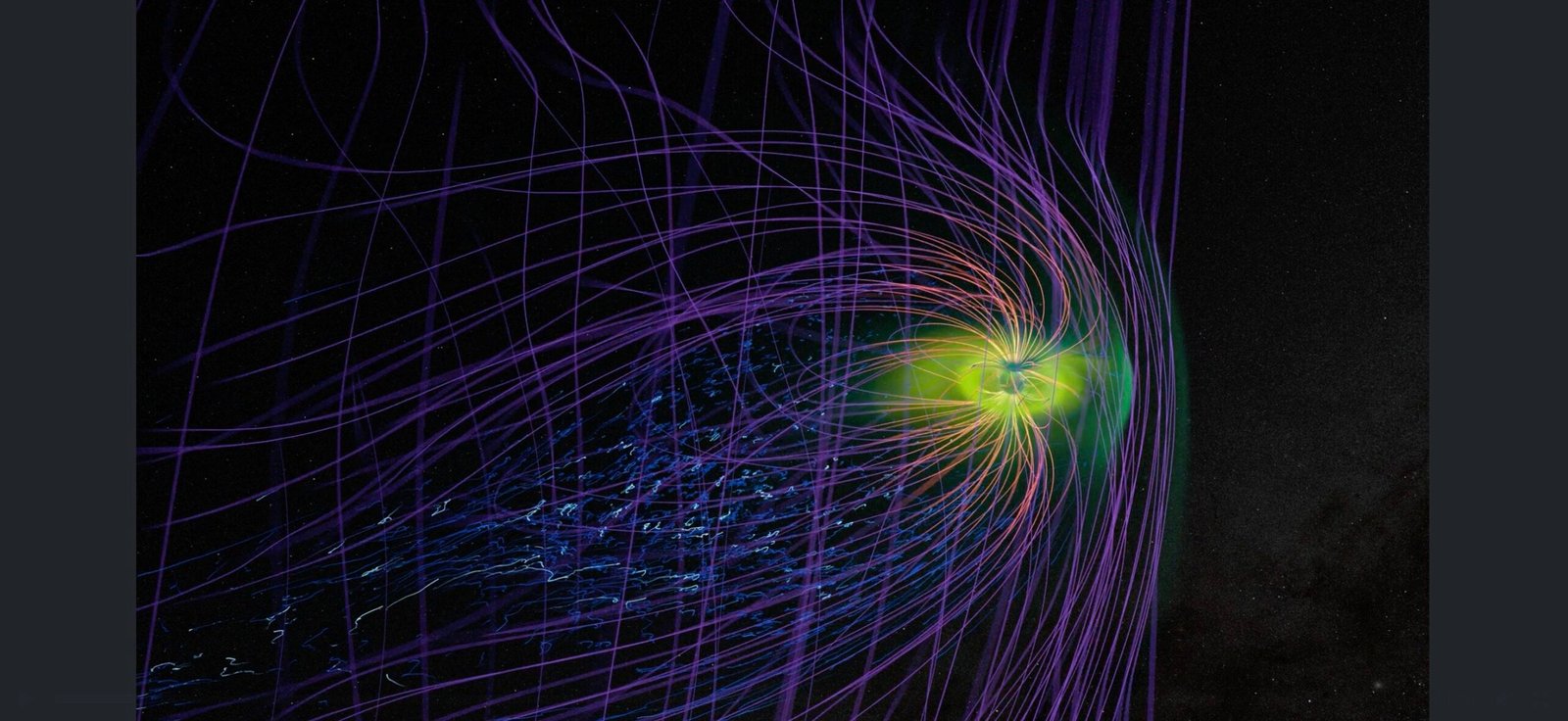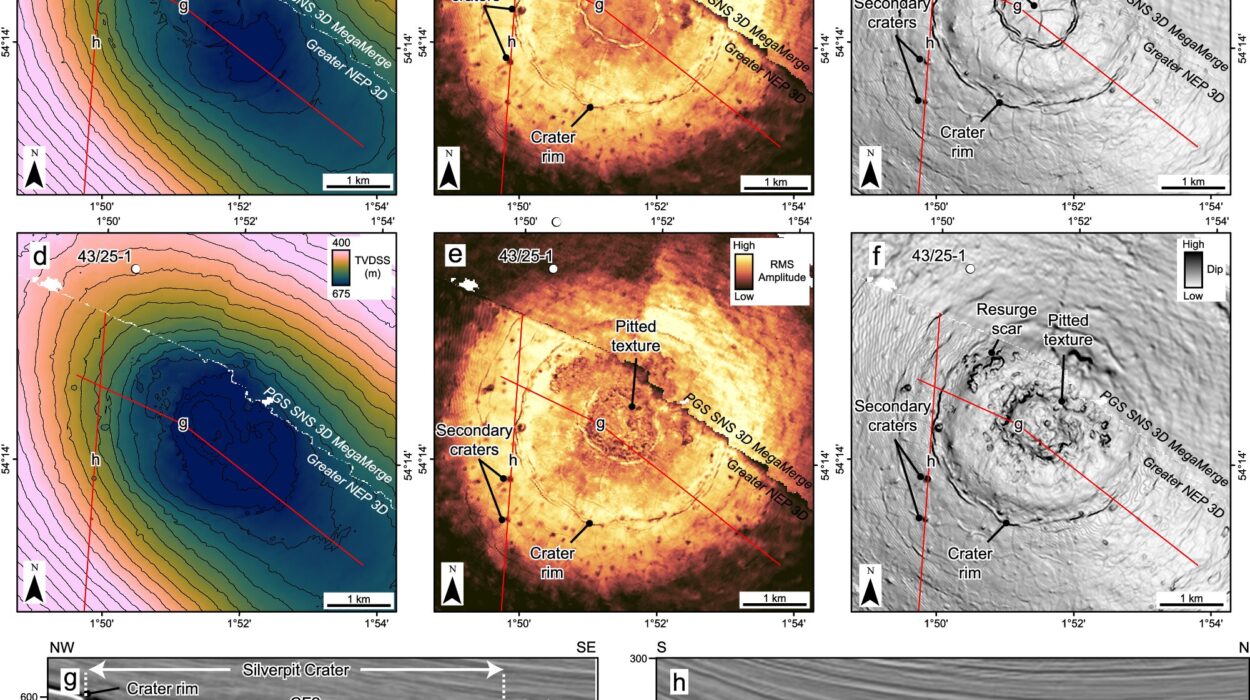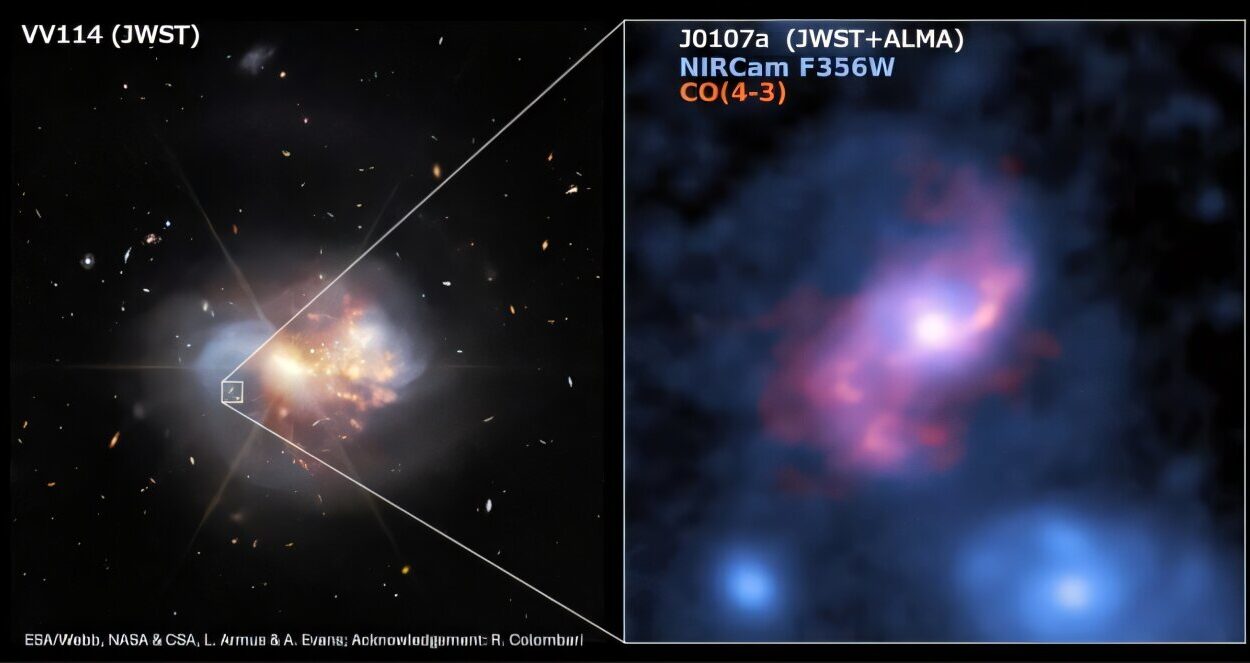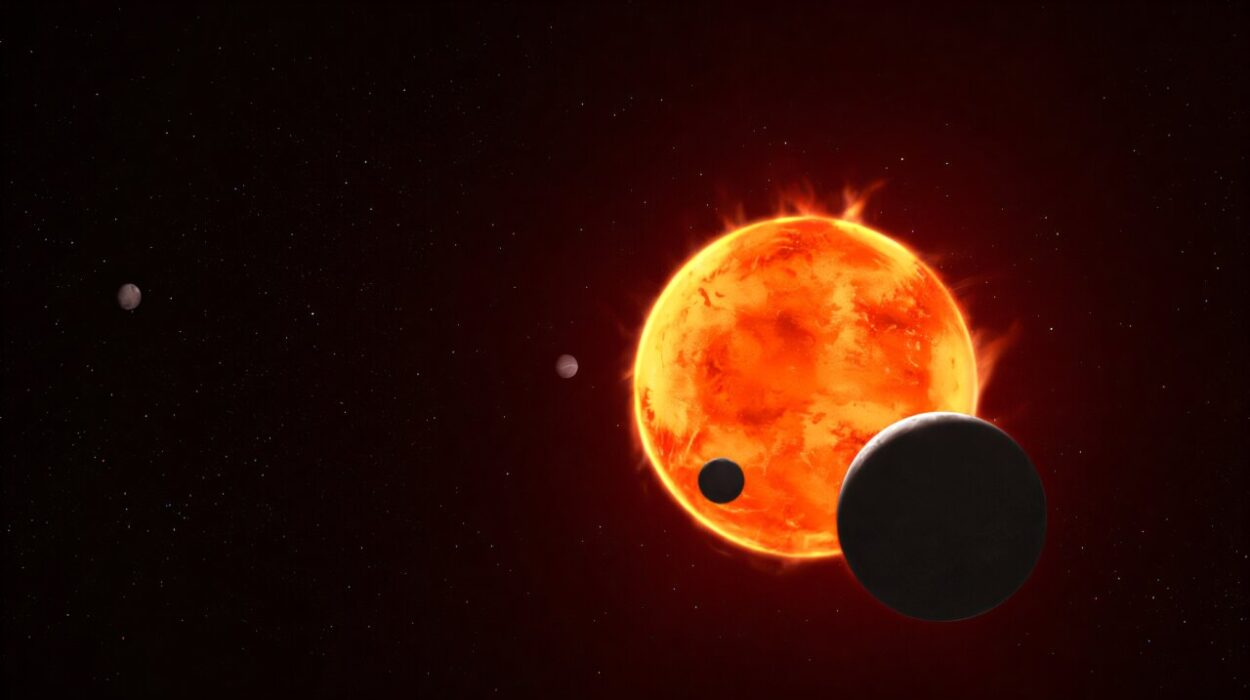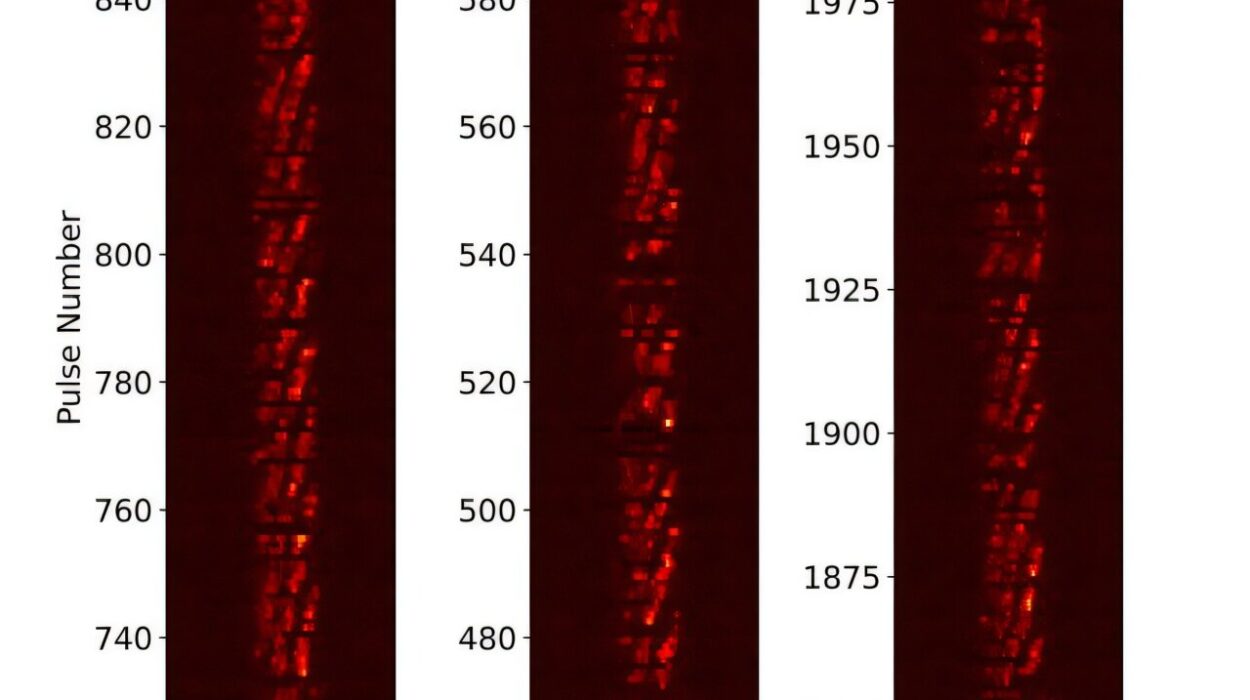In the vast arena of space weather, scientists often fix their gaze on the most electrifying displays—the glowing auroras, the intense radiation surges, and the dramatic effects of geomagnetic storms on our satellites and power grids. But sometimes, the most intriguing stories unfold in the subtle, overlooked layers of Earth’s upper atmosphere. That’s precisely what a groundbreaking study from Kyushu University has revealed.
Published in Geophysical Research Letters, the study focuses not on the commonly monitored F layer of the ionosphere but instead on the elusive and enigmatic sporadic E layer, which resides roughly 90 to 120 kilometers above sea level. Using an extensive global network of radars and satellites, the researchers examined how this thin yet potent layer of ionized metal responded to the powerful Mother’s Day geomagnetic storm of 2024. What they discovered sheds new light on ionospheric dynamics and challenges old assumptions about solar storm impacts.
What Is the Sporadic E Layer?
To appreciate the significance of the findings, it helps to understand the sporadic E layer itself—a feature of the ionosphere that has puzzled scientists for decades.
Typically, the ionosphere is divided into distinct layers—D, E, and F—each with different roles in Earth’s atmospheric and electromagnetic systems. The E layer usually exhibits a diffuse, quiet ionization pattern. However, on certain occasions, thin but extraordinarily dense patches of ionized metal—mostly iron and magnesium—suddenly materialize. These are the sporadic E layers, or Es layers.
They are only about 1 to 5 kilometers thick, but their concentration of ions can be hundreds of times denser than the surrounding atmosphere. Despite their name, these patches are not entirely random; they often follow patterns influenced by winds, tides, and magnetic fields. And, as this new research demonstrates, they can be powerfully shaped by space weather events.
The Mother’s Day Geomagnetic Storm: A Perfect Test Case
On May 12, 2024, a massive solar storm struck Earth. Nicknamed the Mother’s Day storm, it was one of the most significant geomagnetic disturbances in recent years. The storm was caused by a coronal mass ejection (CME) from the Sun—a vast cloud of magnetized plasma that slammed into Earth’s magnetosphere and stirred up violent geomagnetic activity.
Scientists around the globe rushed to analyze the impact. Most attention focused on the F layer, which lies between 150 and 500 kilometers in altitude and is home to the majority of the ionosphere’s charged particles. This layer is known to be highly sensitive to solar storms, showing dramatic increases in ionization, disruptions in GPS signals, and more.
But Professor Huixin Liu and her team at Kyushu University’s Faculty of Science chose to look elsewhere.
“When studying the Mother’s Day geomagnetic storm, many researchers looked at what happened in the F layer,” said Liu. “But we wanted to see if something as powerful as this solar storm did anything to the E layer, which has traditionally been considered unaffected by solar storms. What we found was very interesting.”
A Global Eye in the Sky and on the Ground
To uncover the story unfolding in the E layer, the team turned to an impressive array of tools. They deployed data from 37 ground-based ionosondes—specialized radars that measure the ionosphere’s electron density—alongside observations from COSMIC-2, a constellation of satellites operated in part by Taiwan and the United States.
This hybrid dataset enabled the researchers to construct a global map of sporadic E layer activity during and after the solar storm, capturing both the time and location of Es formations with unprecedented precision.
“This large amount of data was critical for both detecting the presence of sporadic Es and tracking where they formed as time went by,” explained Liu.
The Surprising Results: Sporadic E Layers Were Energized
What the researchers discovered flipped long-standing assumptions on their head. The Es layers didn’t remain unaffected, as had been assumed for decades. On the contrary, they became significantly enhanced—but only after the main phase of the geomagnetic storm.
This period is known as the recovery phase, when Earth’s magnetosphere begins to stabilize and recover from the initial shock of the solar disturbance.
Sporadic Es appeared to form first in high-latitude regions, particularly around the polar zones. Then, as time passed, they propagated toward lower latitudes, showing up in regions like Southeast Asia, Australia, the South Pacific, and the East Pacific.
This downward spread in geographic latitude was particularly fascinating and unexpected.
“These findings suggest that sporadic E layers are most likely caused by disturbed neutral winds in the E region,” Liu said. “The high-to-low latitude propagation pattern aligns with known dynamics in wind and magnetic field interactions after a geomagnetic storm.”
Why It Matters: Communication and Forecasting
Understanding sporadic E activity is more than just an academic curiosity. These layers can interfere with radio communications, particularly in the high-frequency (HF) and very-high-frequency (VHF) bands. Pilots, mariners, amateur radio operators, and even military communications depend on stable ionospheric conditions. When sporadic E layers unexpectedly form, they can reflect or absorb signals, causing distortion, blackouts, or signal redirection.
By proving that Es activity is heightened during the recovery phase of a solar storm, the Kyushu team has opened a new chapter in our ability to forecast and potentially mitigate communication disruptions caused by ionospheric events.
“We now know that sporadic Es enhance during the recovery phase of a solar storm,” said Liu. “So perhaps we can forecast more accurately using the propagation characteristics found in our study and mitigate potential communication disruptions.”
A Call for Further Research
This discovery may be just the beginning. The team plans to re-analyze data from past solar storms using their new approach and advanced dataset. They hope to determine whether this propagation pattern is consistent across other storms, which could solidify its place in space weather modeling.
“Re-examining data from previous geomagnetic storms might help us understand these phenomena even better,” Liu concluded.
A Layer No Longer Ignored
For decades, the E layer of the ionosphere, and particularly the sporadic Es within it, was thought to be largely immune to the chaos of solar storms. But the 2024 Mother’s Day storm tells a different story—a story of invisible winds, migrating metal clouds, and unexpected energy flows coursing through a thin slice of atmosphere just above our heads.
Thanks to meticulous data collection, innovative thinking, and a willingness to challenge assumptions, Professor Liu and her team have shown that even the most ephemeral and elusive layers of our planet’s atmosphere can hold the key to understanding the Sun’s impact on Earth.
As solar activity increases in the coming years, research like this will be critical—not just for scientists, but for everyone who relies on the vast, invisible web of electromagnetic signals connecting our world.
The sporadic E layer may be sporadic in nature, but thanks to this new study, our understanding of it has become far more grounded and predictable. And in the complex dance between Earth and the Sun, that’s no small victory.
Reference: Lihui Qiu et al, Sporadic‐E Layer Responses to Super Geomagnetic Storm 10–12 May 2024, Geophysical Research Letters (2025). DOI: 10.1029/2025GL115154
